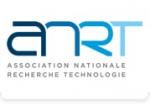Calibrating a Hydrological Green Roof Model
| ABG-134459 | Master internship | 6 months | 600 euros |
| 2025-11-19 |
- Digital
Employer organisation
CRAN Laboratory of University of Lorraine (CNRS UMR 7039)
http://www.cran.univ-lorraine.fr/
The internship will hold in CID (Control Identification Diagnosis) department, team DATA.
The CID department brings together all the research activities of the CRAN focusing on Automatic Control of Continuous and Cyber-Physical Systems. A wide range of topics is covered, including: modeling, identification, analysis, control, observation, diagnosis, and fault tolerance.
Description
Context
Managing rainwater is a major challenge in cities, especially with climate change and the increase in impermeable surfaces such as roads and buildings. Green roofs (GRs) have become an important part of sustainable urban development [1]. They can help reduce stormwater runoff by slowing it down and decreasing the total volume of water flowing into drainage systems.
To understand and predict how much water a green roof can retain, researchers use models based on water flow in porous materials like soil [2]. These models include soil parameters (related to the physical properties of the substrate) and vegetation parameters (related to plant characteristics). However, these parameters are often uncertain because they are difficult to measure accurately or vary naturally.
These uncertainties can affect the model’s predictions of water content. Therefore, the model must be calibrated — that is, adjusted so that its outputs match real measurements. Calibration involves changing the model parameters step by step and comparing the simulated results to observed data until the model performs well according to a chosen objective function.
What You Will Do
The first goal of this work is to review the different calibration methods found in the literature, with a particular focus on the Bayesian Generalized Likelihood Uncertainty Estimation (GLUE) approach [3].
Unlike traditional methods that provide a single "optimal" parameter set, GLUE yields a range of parameter sets that all produce acceptable model simulations. In addition, a global sensitivity analysis [4] helps identify the parameters that most strongly influence the model’s ability to reproduce the experimental data, as well as those with negligible impact, which can be excluded from the calibration process and fixed at a nominal value. The aim of the work is to explore this type of approach.
The second goal is to apply the selected method to the calibration of a hydrological green-roof model. Real monitoring data collected between 2020 and 2024 will be used for this application.
References
[1] D. Perivoliotis, I. Arvanitis, A. Tzavali, V. Papakostas, S. Kappou, G. Andreakos, A. Fotiadi, J.A. Paravantis, M. Souliotis, G. Mihalakakou. Sustainable Urban Environment through Green Roofs: A Literature Review with Case Studies. Sustainability, 2023, 15(15976). https://doi.org/10.3390/su152215976.
[2] Y. Li and Jr. RW Babcock. Green roof hydrologic performance and modeling: a review. Water Science and Technology, 2014, 69(4):727-38. doi:10.2166/wst.2013.770.
[3] M. Mirzaei, Y. F. Huang, A. El-Shafie and A. Shatirah. Application of the generalized likelihood uncertainty estimation (GLUE) approach for assessing uncertainty in hydrological models: A review. Stochastic Environmental Research and Risk Assessment, 2015, DOI: 10.1007/s00477-014-1000-6.
[4] E. Borgonovo and E. Plischke. Sensitivity analysis: A review of recent advances. European Journal of Operational Research 248 (2016)869–887, 2016, http://dx.doi.org/10.1016/j.ejor.2015.06.032
What Skills & Experience You Should Bring
You are in the final year of an engineering school or enrolled in a Master’s degree (M2) in Control Engineering or Applied Mathematics, and you have a background in statistics.
You have strong analytical and synthesis skills, and you are curious, motivated, and interested in research.
You have good written and oral communication skills in English, and optionally in French.
Informations
Founding
Standard statutory internship allowance (600 euros per month)
Laboratory
CRAN Laboratory of University of Lorraine (CNRS UMR 7039)
Location
Polytech Nancy - 2 Rue Jean Lamour
54519 Vandoeuvre Lès Nancy Cedex
FRANCE
Period
Internship of 6 month from march to august 2026
To apply
If you are interested in this internship offer, please contact Floriane COLLIN and include your CV, a cover letter, and copies of your diplomas and transcripts.
Profile
You are in the final year of an engineering school or enrolled in a Master’s degree (M2) in Control Engineering or Applied Mathematics, and you have a background in statistics.
You have strong analytical and synthesis skills, and you are curious, motivated, and interested in research.
You have good written and oral communication skills in English, and optionally in French.
Starting date
Vous avez déjà un compte ?
Nouvel utilisateur ?
Get ABG’s monthly newsletters including news, job offers, grants & fellowships and a selection of relevant events…
Discover our members
 Institut Sup'biotech de Paris
Institut Sup'biotech de Paris  Tecknowmetrix
Tecknowmetrix  Nokia Bell Labs France
Nokia Bell Labs France  CASDEN
CASDEN  Groupe AFNOR - Association française de normalisation
Groupe AFNOR - Association française de normalisation  ANRT
ANRT  SUEZ
SUEZ  Ifremer
Ifremer  ASNR - Autorité de sûreté nucléaire et de radioprotection - Siège
ASNR - Autorité de sûreté nucléaire et de radioprotection - Siège  MabDesign
MabDesign  PhDOOC
PhDOOC  Laboratoire National de Métrologie et d'Essais - LNE
Laboratoire National de Métrologie et d'Essais - LNE  Servier
Servier  Généthon
Généthon  MabDesign
MabDesign  TotalEnergies
TotalEnergies  Aérocentre, Pôle d'excellence régional
Aérocentre, Pôle d'excellence régional  ADEME
ADEME  ONERA - The French Aerospace Lab
ONERA - The French Aerospace Lab  CESI
CESI

